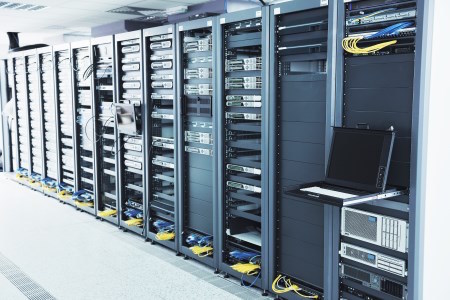March 27, 2024
Best Practices for Data Center Decommissioning

Data center decommissioning is a complex and critical process that involves the systematic shutdown, removal, and disposal of data center infrastructure, equipment, and data. With the rapid pace of technological change and the shift towards cloud computing, many organizations find themselves needing to decommission outdated or redundant data centers. This process, however, is fraught with challenges, particularly when it comes to ensuring data security, minimizing environmental impact, and optimizing the return on disposed assets. To navigate these challenges effectively, it’s essential to adhere to best practices in data center decommissioning.

Planning and Team Assembly
The first step in a successful data center decommissioning process is thorough planning and the assembly of a dedicated project team. This team should include members with expertise in IT, data security, facilities management, and logistics. Clear roles and responsibilities must be assigned to ensure every aspect of the decommissioning process is managed with precision.Comprehensive Inventory and Documentation
A detailed inventory of all assets in the data center is crucial. This includes not only physical hardware like servers, storage units, and networking equipment but also software licenses and data stored in these systems. Proper documentation of these assets, along with their configurations and interdependencies, will guide the decommissioning process and help in identifying assets that can be repurposed, resold, or recycled.Data Security and Compliance
Data security is a paramount concern during decommissioning. Sensitive information must be securely erased or destroyed in compliance with industry standards and regulatory requirements. Methods such as cryptographic erasure, degaussing, or physical destruction of drives can be employed, depending on the sensitivity of the data and compliance obligations. Before any physical dismantlement, ensuring that all data stored within the data center’s devices is securely erased is paramount. This step must adhere to data protection regulations like GDPR, HIPAA, etc., to prevent data breaches. In cases where data needs to be preserved, secure backups should be created. Employing methods like cryptographic wiping or physical destruction for drives containing highly sensitive data can ensure data is irretrievable post-decommissioning.Vendor and Third-Party Contract Management
Many data centers rely on third-party services and vendor contracts. As part of the decommissioning process, these contracts need to be reviewed, and necessary notifications or terminations must be issued in a timely manner to avoid unnecessary costs or legal complications.Sustainable Disposal and Environmental Considerations
The environmental impact of disposing of data center equipment is significant. Best practices involve prioritizing the recycling and refurbishing of equipment. Organizations should work with certified e-waste recycling partners to ensure that all materials are handled in an environmentally responsible manner, reducing the carbon footprint of the decommissioning process. The disposal of IT equipment must be handled with environmental stewardship in mind. This involves partnering with certified e-waste recyclers like TeleTraders who can ensure that hazardous materials are properly disposed of and that usable materials are recovered and recycled, thereby minimizing the environmental footprint of the decommissioning process all the while following industry guidelines such as ITAD.Asset Recovery and Financial Optimization
Decommissioning presents an opportunity for financial recovery through the sale of assets that are no longer needed but still hold value. A thorough assessment of the market and potential buyers for such equipment is essential for maximizing returns. This is best to leave to experts in the disposal of old network equipment like Teletraders that can assure the process is handled in a professional manner while offering funds to offset the cost of the project.
